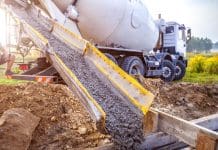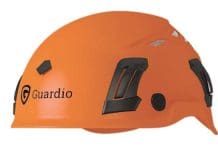UK exports of construction and earthmoving equipment remains resilient in 2017, showing a 21% increase in the first 9 months compared with 2016
UK imports of equipment also remain strong, highlighting a 12% increase in the first 9 months of 2017 compared with 2016. This reflects an increased demand in the domestic equipment market this year.
UK exports of construction and earthmoving equipment displayed a further modest increase in the third quarter of 2017, representing a fourth consecutive quarter of growth. Exports in Q3 showed a 1.3% increase on Q2 levels at £723m, and was the highest quarterly level for over two years, since Q2 2015. Overall, exports in the first 9 months of the year are 21% up on 2016 levels.
The increasing levels of exports of construction and earthmoving equipment can be attributed to both improving demand in many of the major overseas markets, as well as the benefit of the weaker sterling exchange rate since the middle of 2016, following the Brexit referendum.
The US remained the top destination for UK exports in the first nine months of 2017, accounting for 23% of total exports on a £ value basis. Collectively, exports to EU28 countries have increased to 44% of total exports on a £ value basis in the first nine months of the year, compared with 41% in 2016.
Imports of equipment show a reduction in Q3, following the same seasonal pattern as the last two years, “peaking” in Apr/Jun quarter, and “bottoming” in Oct/Dec. However, in £ value terms, imports in Q3 were 6% higher than the same quarter in 2016, at £342m. In the first nine months of 2017, imports are 12% higher than the same period in 2016.
Higher levels of imports of equipment in the first 9 months of the year are consistent with higher equipment sales to the UK market, according to the UK construction equipment data exchange.
The UK construction equipment data exchange is operated by Systematics International Ltd., a specialist data processing company. The CEA has access to high level data from this scheme, via a partnership arrangement with Systematics.
Japan remains the single biggest country source of imports in 2017, accounting for 20% of total imports of equipment in the first 9 months of the year on a value basis.
Overall, the UK remains a net exporter of construction and earthmoving equipment, measured in both weight and value terms. In Q3, the trade surplus increased significantly to £381m, the highest quarterly level since 2014. In the first nine months of the year, the export surplus has shown a 33% increase on the same period in 2016.
Definition of equipment included in the analysis of export and import statistics
The data used in this report is taken from HMRC official trade statistics, and covers construction and earth moving equipment (excluding separate trade data for components and parts). Trade data has been used from 9 different HS (Harmonized System) codes. This consists of the following at the four digit level:
8413 – concrete pumps
8474 – crushing and screening equipment, and concrete, mortar and other types of mixers
8479 – machinery for public works
8701 – track-laying tractors
8704 – dump trucks for off-highway use
8705 – concrete mixer lorries and pumping vehicles
8426 – cranes (but excluding gantry cranes, overhead travelling cranes and ship derrick cranes)
8429 – construction and earthmoving equipment – including bulldozers, graders, scrapers, loaders, excavators, shovels, tamping machines and road rollers
8430 – pile driving and pile extracting equipment, tamping and compacting machinery.














![[VIDEO]With cable theft on the rise, how can you protect your construction site? Copper wire rod non-ferrous metals, product metal industry, representing construction cable theft](https://www.pbctoday.co.uk/news/wp-content/uploads/2024/10/iStock-2167549051-218x150.jpg)